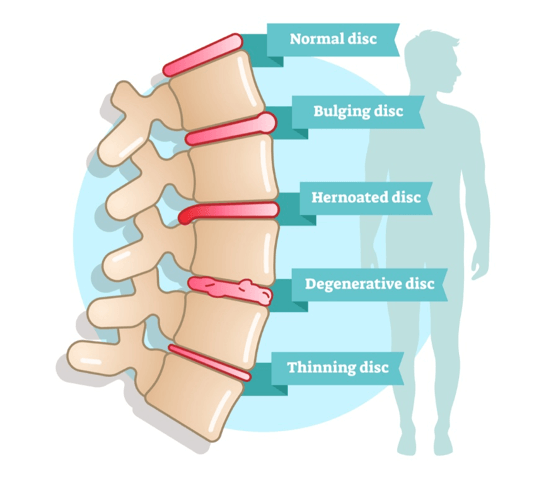Quick Guide to Identify Slipped or Bulging Disc
Back pain is a common complaint, but sometimes it can indicate a more serious condition like a slipped or bulging disc. Understanding the symptoms and causes can help you seek timely medical attention and prevent further complications.
What is a Slipped or Bulging Disc?
The spine consists of vertebrae cushioned by discs that act as shock absorbers. A bulging disc occurs when the disc protrudes but remains intact, while a slipped (herniated) disc happens when the disc’s inner gel leaks out through a tear, potentially pressing on nearby nerves.
Common Causes
-
Aging: Disc degeneration over time
-
Injury: Trauma or sudden strain
-
Repetitive Motion: Excessive bending or lifting
-
Obesity: Extra stress on the spine
-
Poor Posture: Slouching or improper lifting techniques
Symptoms to Watch For
1. Localized Pain
Pain in the lower back, neck, or affected area, especially when moving or sitting for long periods.
2. Radiating Pain
Pain that travels to the arms, legs, or buttocks, depending on the location of the affected disc.
3. Numbness or Tingling
A feeling of “pins and needles” in the extremities, suggesting nerve compression.
4. Muscle Weakness
Difficulty lifting objects, walking, or maintaining balance due to nerve impairment.
5. Worsening Pain with Activity
Pain intensifies with movement, bending, or prolonged standing.
When to Seek Medical Help
If you experience severe pain, difficulty in controlling bladder or bowel functions, or progressive weakness, seek medical attention immediately, as these could indicate serious nerve damage.
Diagnosis and Treatment
Diagnosis
-
Physical Examination: Evaluating mobility, reflexes, and pain response
-
Imaging Tests: MRI or CT scans to confirm the condition
Treatment Options
-
Rest and Activity Modification: Avoid strenuous activities
-
Pain Management: Medications, physical therapy, and hot/cold therapy
-
Surgery: In severe cases, procedures like discectomy may be required
Preventative Measures
-
Maintain good posture
-
Exercise regularly to strengthen core muscles
-
Use proper lifting techniques
-
Maintain a healthy weight
Conclusion
Identifying a slipped or bulging disc early can help in managing pain and preventing long-term complications. If you suspect any symptoms, consult a healthcare provider for appropriate diagnosis and treatment.
Prioritize spinal health to ensure a pain-free and active life!


